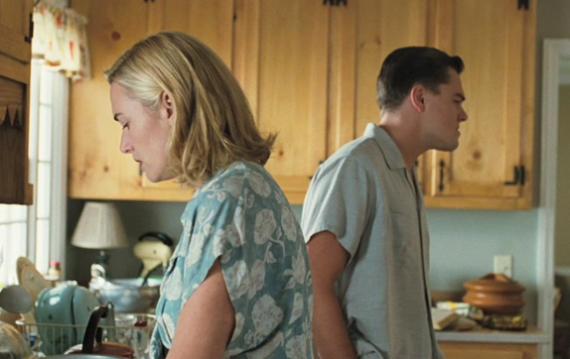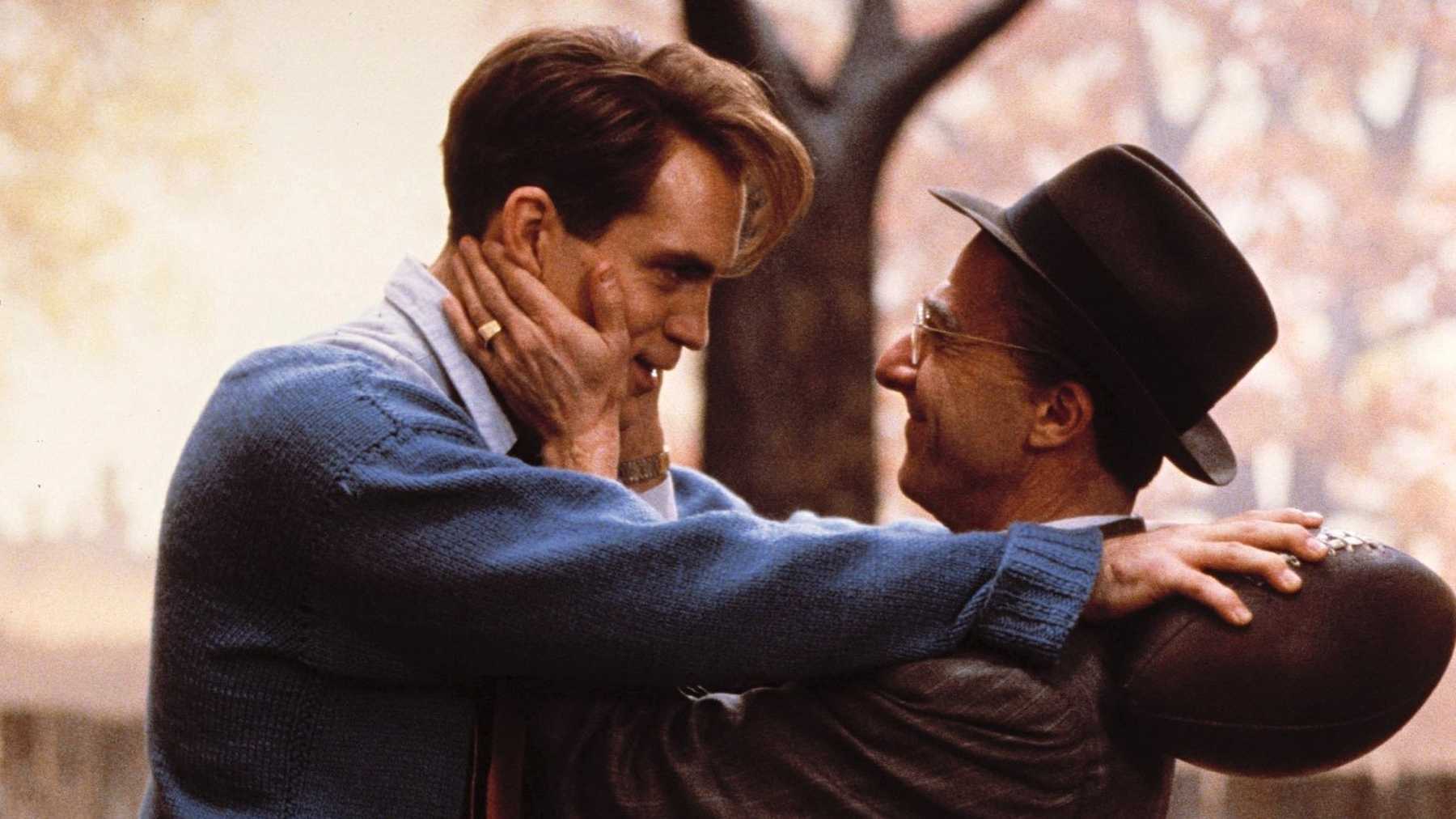The American Dream is a concept that has been present in literature since the early 1900s. It encapsulates the idea that America is a place of freedom, of prosperity, and where wealth is achievable to anybody. The notion originally came from Americans themselves, in an attempt to persuade non-Americans to immigrate and bring with them wealth and talent of their own. However, it didn’t take long for the realities to come crashing down on those in pursuit of their dreams, and for the harsh criticisms of the so-called ‘dream’ to flood in. It made its way into mainstream books, plays, and films by the mid-1900s.
Today I will discuss with you my four favourite literary adaptations which discuss the American Dream, and evaluate how, in the case of these characters, it was an illusion that led to their tragic demise. I should also warn you that there will be spoilers for all four films (The Great Gatsby, The Bell Jar, Revolutionary Road, and Death of a Salesman) ahead. Each of these has a protagonist who has been given big dreams, only for them to fall away leaving just the painful reality of their lives.
The Great Gatsby (2013)

The Great Gatsby is one of the most elaborate tales of a man whose life has been torn to shreds by unmatched expectation. DiCaprio described his character, Jay Gatsby, as an ‘iconic American dreamer,’ with his garish, extravagant, vibrantly-coloured and enchanting parties. Gatsby is the epitome of wealth, desirability, and influence. However, he ultimately meets the cold reality that moving to Long Island, mingling with the rich and beautiful, and pining after Daisy (Carey Mulligan) cannot save him from ruin.
While his expectations of the American Dream are not to blame entirely for his delusion that his life can be wonderful and happy, they certainly play a part. How many ideal depictions of the American Dream have you seen that depict anything other than a husband, wife, and one or two kids? Gatsby could not fulfill the American Dream without Daisy by his side, and, as we all know, he never quite caught her. Gatsby builds his wealth from illegal businesses, and buys an offensively lavish mansion, but the American Dream has failed Gatsby; his new lifestyle does not provide him with the happiness and stability he wishes for, and he still does not have the only thing he ever actually wanted: love. All he really wanted was Daisy, and no amount of hoping that his life would work out can give him that love.
This film in particular teaches us how the American Dream fails everybody. While Gatsby has secured himself the ‘ideal’ lifestyle, he dies unhappy and alone, only loved by one close friend. He gained this life with no real talent, no regard for those around him unless he might find them useful, and no sense of how to use his wealth sensibly. This dashes any lingering pieces of hope that it is those providing honest work that America rewards with wealth.
For men, the American Dream told them their role was to be a provider; that they should aspire to build wealth and support a happy family. Gatsby was not able to meet this expectation—he lives the American Dream lifestyle—but he has no family. Many men were not able to meet this expectation; either because they could not accumulate the wealth, or because they could not get the woman. Ultimately, it is Gatsby’s dreams which destroy him. As his best friend, Nick (Tobey Maguire), describes him, Gatsby has an “extraordinary sense of hope”.
The Bell Jar (1979)
Based on the book of the same title, written by Sylvia Plath in 1963, The Bell Jar tells the story of Esther Greenwood (Marilyn Hassett). Esther travels to New York for the summer to complete a fashion scholarship with a popular magazine. She has big dreams for her time in the city, and aspires to one day become a writer. But none of her experiences in the city live up to her dreams. This story, along with Revolutionary Road which we will come to next, tells of an epidemic of female mental health issues arising in America in the mid-1900s, and one that was exasperated by the lack of support for women. The film, in my opinion, does justice to the book, which may perhaps be Sylvia Plath’s greatest legacy.
Esther is a very typical girl—she wants to enjoy her summer in New York, is excited about the new experiences on her horizon, and feels the injustices of the world just a little bit too intensely. The picture that has been painted to her of New York tells the city as a wonderful, magical place—a place where she will be free to follow her dreams, and a place where her negative emotions and depression won’t touch her how they do in her ordinary life. In this aspect, it draws parallels with Gatsby’s life—the bright party atmosphere of New York, a place where your dreams will come true.
Yet as soon as she arrives she is preoccupied with an execution she reads about in the newspaper, and the images of cadavers she saw at Buddy Willard’s hospital. She is taken up with thoughts about death, and we watch her fall into a depression that only worsens as she continues her scholarship, and, once it ends, she becomes so severely depressed that she tries to kill herself.
The catalysts to this were a sexual assault at the end of her time in New York, and a letter informing her that she did not get into her dream writing course soon after she returned home. She has begun to realise that her life will not go the way she wanted, and she does not know how to handle this. The film ends with Esther believing she is finally free from her mental illness, but her life is still far from settled and she still has not achieved her dreams.
Revolutionary Road (2008)

Moving from one female protagonist to another, April Wheeler (Kate Winslet) is our next subject. Revolutionary Road is my favourite film not only of this list but of all time. It perfectly encapsulates how a small twist of fate can be the catalyst for your whole world to fall apart.
Set in 1955, Revolutionary Road follows the lives of Frank (Leonardo DiCaprio) and April Wheeler, who have moved to Connecticut in order for April to pursue her acting dreams and for Frank to support her and their children. He has a job at Knox Machines, and is earning enough to pay their mortgage and keep them happy. A very typical set up for the time, but it wasn’t enough for the Wheelers. April soon starts to get irritated with Frank—who doesn’t support her aspirations and can be openly resentful of her—and begins to dream of starting another new life in Paris.
Ultimately, America has not kept its promise to them. Frank is miserable in his job, April is going stir-crazy as a failing actress, and their relationship with one another has been tortured by their shared resentment of becoming so ordinary. They, as members of the Beat Generation, were focused on rebellion and freedom.
Many couples of the time probably faced a similar fate: one working long hours in a boring job and the other feeling trapped, both falling steadily out of love with one another. Divorce was rarely considered a viable option, and many women did not have the financial success, perceived intelligence, nor healthcare rights to independently start afresh. Once they had a family their life was planned out. The American Dream put this lifestyle on a pedestal: being a stay at home mother, being financially supported, and being able to fill your days with domestic bliss. But April Wheeler wanted more. So when an unexpected pregnancy ploughed through her plans to begin a career abroad, she fell apart. Abortions were not legalised across America until 1973, after Roe vs Wade, perhaps today’s healthcare and greater support for mental health issues would have saved her, but 1950s America did not equip her with these things.
April dies at the end of the film, after trying to give herself an abortion at home because she resents that her life has been traded for the tedium of motherhood. April wished for a new life but the limitations the world and the people she loved had drawn around her made this impossible. Perhaps the most susceptible to the American Dream were the women, those bound to a life of misery and loneliness after the promises of the New World unraveled. It seems such a shame that a promising and very much in love young couple can come completely undone as a result of their own expectations and an even bigger shame that so many people faced similar stories after succumbing to the propaganda of the American Dream.
Frank calls her an “empty shell of a woman”, but instead of confronting her issues, he takes them personally. Maybe if Frank had not felt so down himself he might have spotted these changes in his wife, but even then it is unlikely that he could have changed the outcome without being willing to listen to her desire to stop having children. The once-happy couple has become infected with secrets and accusations, and April falls into depression not because she cannot obtain the American Dream, but because it has failed to satisfy her. She still feels ordinary.
It is the Wheelers’ ordinary nature is what makes this film so chilling. You can identify pieces of your own dreams and aspirations in theirs and can begin to see how your life might have been different if you had been born just a few decades ago. April tells us, “It takes backbone to live the life you want” – this is true now and it was even truer then. The quality and versatility of the two leads acting immerses you in their world, and this will always be one of my favourite films.
Death of a Salesman (1985)

Ironically, Willy Loman (Dustin Hoffman) desires everything that Frank and April Wheeler are trying to escape. He longs for financial stability, a peaceful family, happiness. Willy wants to escape the reality of his life as much as April did, but he would have given anything to live her life. Death of a Salesman contains the most authentic representation of the illusion of the American Dream on this list. It portrays quite simply the story of a man feeling worthless for not meeting the expectations he and his family have of himself. There is a huge class disparity between the Loman’s and the aforementioned Wheelers, but both are suffering inside a system they can’t escape.
When we meet the Loman family, Willy is working as a traveling salesman, and his two sons are living at home, unemployed. His wife, Linda (Kate Reid), is a housewife and their conversations seem to be solely based around their sons and Willy’s failing job. Throughout the film, we watch Willy’s life spiral downwards as he struggles to cope with the depression he faces. His life consists of working a job he despises and coming home to a family who doesn’t seem to appreciate him. He feels he was never good enough to attain the life he was promised by the tempting and believable claims of the American Dream. His story tells us in no uncertain terms that it is an illusion, and that ordinary people will either be bitterly disappointed—when they realise the American Dream means nothing in literal terms other than some indication of stability—or will never get close enough to the ideal to discover this.
This happened to many men in mid-19th century America; instead of achieving the ‘dream’ they were seeking, they become just another cog to capitalism. Willy asks Linda, “how can you get lost in the greatest country in the world?” in reference to his son, who cannot find a worthwhile job. He believes hard work is all you need to be successful in America, despite his own struggle with work, and he criticises his son for what he sees as laziness. However, it becomes increasingly obvious to everybody watching the film that this is not the case—that the destiny of Willy and of his son are both much less glamorous than Willy imagined.
It is this thought—that everybody else just has to work hard and then they will gain the stability they crave—that not only pits people against one another instead of those exploiting them, but also leads men to believe that they have failed in some way by not achieving the American Dream for their families. Willy suffers from this mindset and takes it out on those around him. Eventually, he kills himself so that his family can live off his life insurance.
In Summary
So there are really two main narratives representing the illusion and destruction of the American Dream. There are those people who work and grind but no matter what never achieve the wealth and stability that is promised to them, and there are those who have reached a position of stability and income but find that it isn’t enough to make them happy. Along the way, the stories from both sides are littered with the breakdown of relationships; usually over money or mental health, or infidelity. In either scenario, people’s lives are simply not measuring up to the projections of their future. And in both cases, the American Dream is an illusion with tragic consequences.



